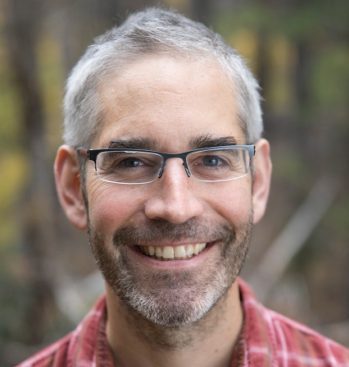Andrew RichardsonRegents' Professor, ECOSS/SICCS

Research Interests
Professor Richardson is an ecologist whose research addresses the impacts of global change on terrestrial ecosystems, and the feedbacks between terrestrial ecosystems and the atmosphere and climate system.
Richardson’s research focuses on (1) the exchanges of carbon, water, and energy between the land surface and the atmosphere; (2) phenology, or the seasonality of vegetation activity in different ecosystems, and the factors that drive this seasonality; (3) carbon allocation in trees, and basic questions related to tree physiology.
Richardson is PI of the PhenoCam network, a continental-scale phenological observatory that uses digital camera imagery to track, in near real time, the phenology of diverse ecosystems across North America. In collaboration with David Hollinger (USDA Forest Service), Richardson has been jointly responsible for running the AmeriFlux tower at the Bartlett Experimental Forest (New Hampshire) since 2004. Richardson is also actively involved in research projects at the Howland Forest, Maine; the Niwot Ridge AmeriFlux site in Colorado; the SPRUCE facility in northern Minnesota; and the Harvard Forest, Massachusetts.
Richardson has been identified as a Highly Cited Researcher in both Environment/Ecology and Agricultural Sciences.
Lab Website
Full Curriculum Vitae
Selected Publications
Hufkens, K., T.F. Keenan, L.B. Flanagan, R.L. Scott, C.J. Bernacchi, E. Joo, N.A. Brunsell, J. Verfaillie and A.D. Richardson. 2016. Productivity of North American grasslands is increased under future climate scenarios despite rising aridity. Nature Climate Change, 6: 710-714. DOI: 10.1038/NCLIMATE2942
Keenan, T.F., J. Gray, M.A. Friedl, M. Toomey, G. Bohrer, D.Y. Hollinger, J.W. Munger, J. O’Keefe, H.P. Schmid, I. Sue Wing, B. Yang, and A.D. Richardson. 2014. Net carbon uptake has increased through warming-induced changes in temperate forest phenology. Nature Climate Change, 4: 598-604. DOI: 10.1038/NCLIMATE2253
Keenan, T.F., D. Hollinger, G. Bohrer, D. Dragoni, J.W. Munger, H.P. Schmid, and A.D. Richardson. 2013. Increasing forest water use efficiency as atmospheric CO2 levels rise. Nature, 499: 324-327. DOI: 10.1038/nature12291
Richardson, A.D., T.F. Keenan, M. Migliavacca, O. Sonnentag, Y. Ryu, and M. Toomey. 2013. Climate change, phenology, and phenological control of vegetation feedbacks to the climate system. Agricultural and Forest Meteorology, 169: 156-173. DOI: 10.1016/j.agrformet.2012.09.012
Richardson, A.D., M.S. Carbone, T. Keenan, C. Czimczik, D.Y. Hollinger, P. Murakami, P.G. Schaberg, and X. Xu. 2013. Seasonal dynamics and age of stemwood nonstructural carbohydrates in temperate forest trees. New Phytologist, 197: 850-861. DOI: 10.1111/nph.12042




